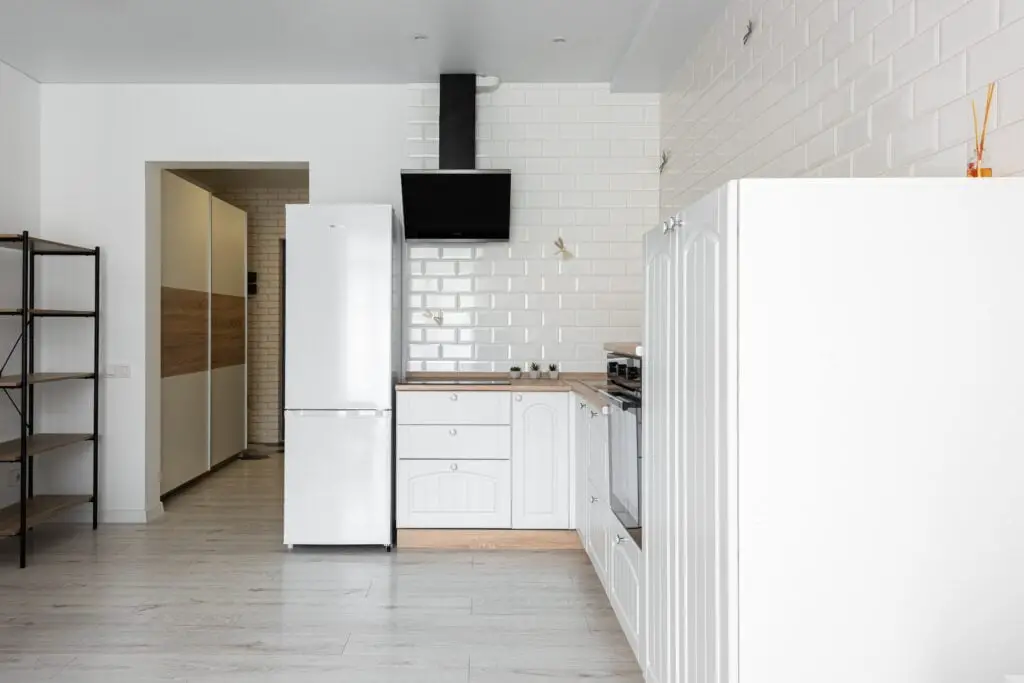
Peel and Stick Flooring: What to Know Before You Buy
This temporary flooring option is more affordable than hardwood or tile
Do you desire a wide range of fashion options at an affordable price? Flooring made of peel and stick might be worthwhile. It’s a simple, low-cost, and quick way to update your floors. It’s perfect for rental properties and low-cost remodels because it’s cheap and transitory.
What you need know about this flooring substitute, according to specialists, is as follows.
What Is Peel and Stick Flooring?
Flooring that peels and sticks is exactly what it sounds like. For quick and simple installation, it attaches directly to the floor.
According to Kim Abrams, CEO of Abrams Roofing, “Peel and stick flooring is similar in principle to peel and stick wallpaper, in that it uses an adhesive backing to apply directly onto a surface.” It is available in numerous forms and materials to match any decor.

Peel and Stick Flooring Materials
According to Sean Chapman, the owner of Tools’n’Goods, peel and stick flooring is comprised of vinyl that is between 0.3 and 0.5 mm thick. It can even simulate real wood and comes in a variety of hues and textures. Peel and stick flooring that looks like wood is currently popular, although stone tiles and patterned tiles are also often used. Peel and stick wall tiles are a possibility as well.
Peel and Stick vs. Other Flooring Types
Three main factors set peel and stick flooring apart from other flooring types: price, ease of installation, and durability.
Cost
Peel and stick flooring is typically the most affordable choice. According to Chapman, laminate flooring costs between $0.50 and $2 per square foot on average, whereas hardwood flooring ranges from $5 to $12 per square foot. If you want to do it yourself, you’ll also save money on installation charges.
Installation
According to Chapman, vinyl stick flooring doesn’t need an underlayment like other types of flooring do. “With this, DIY installation is lot simpler! Peel and stick flooring can be installed on any level, solid surface, such as concrete or subflooring. Padding is necessary underneath carpet, on the other hand.
Longevity
Flooring made of peel and stick doesn’t endure as long as other flooring types. Although Chapman asserts that high-quality items may survive up to 25 years under perfect circumstances, Abrams asserts that you shouldn’t expect it to endure longer than five years. Hardwood, in contrast, has a longer lifespan.
The Positive News is Peel and stick flooring is simple to take out and replace when it becomes worn.
DIY Peel and Stick Flooring Installation
It’s simple to do a DIY job with peel and stick flooring. Its main appeal is that. A tape measure, putty knife, pencil, clear ruler (or straightedge), utility knife, scrap wood, hammer, and stepladder are required for installation, according to Abrams.
After obtaining your equipment and flooring, Abrams gives the following installation advice:
- Start with a tidy, dry space.
- Work your way outward to the walls starting in the middle of the space.
- To uniformly space flooring panels, use spacers.
- Where two components converge, take care to provide a smooth appearance.
Peel off the backing and stick the parts one at a time for installation that couldn’t be much easier. The ideal method, according to Chapman, is to carefully peel back a little portion of the backing on the edge, glue it in place, and then slowly peel back the remaining backing while pressing down with a plastic spatula.
DIY Peel and Stick Flooring Removal
Peel and stick flooring is also self-removable. Depending on the kind of flooring, this can be more difficult. According to Abrams, you’ll need adhesive remover, putty knives, a pry bar, and pliers to remove peel and stick flooring. Chapman advises using a scraper with many tools.
The removal procedure is the same regardless of the tools you employ. Pry a tile off by getting under its edge, then do the same with the following tile. Before you start, consult the manufacturer to make sure the glue is lead-free and devoid of urea formaldehyde, which can produce unpleasant fumes.
To see other material construction, please see here.
To know other construction guides, tips, and methodology for beginners, veterans, and contractors, please see here.
